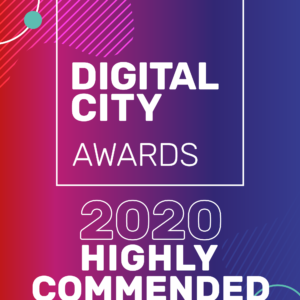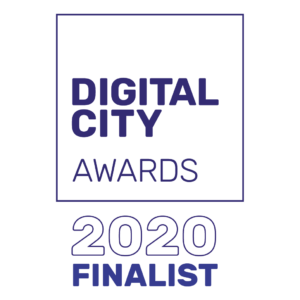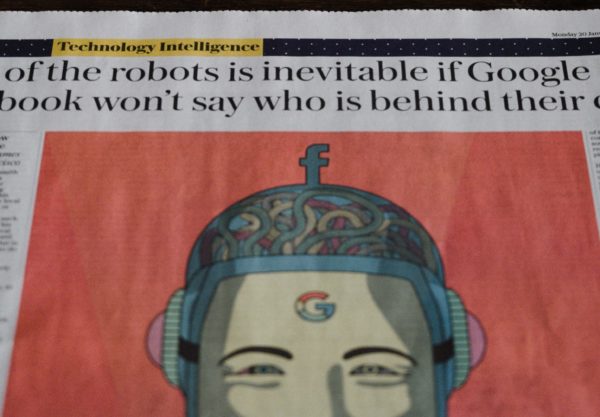This Puffer study investigated the extent to which managers and HR professionals consider corporate identity when recruiting the right “brand people”, and the efficiency of recruitment practices. The sample consisted of 14 managers with recruitment responsibilities in four hotels within an international Hotel Brand (which will remain anonymous for obvious reasons), and a quantitative method was employed (online survey including closed and open questions). I am not aware of previous studies on the subject, hence the research is exploratory, and meant to “open doors” to further research.
Previous studies were reviewed prior to developing a questionnaire meant to assess the efficiency of recruitment practices vs. findings within the social psychology field. The survey was sent to managers in four hotels of Brand and the results were compiled in tables that allowed for easy analysis (i.e., percentages). Previous research was reviewed to determine the relationships between corporate identity, employees’ perceptions and corporate image.
First, the study found that managers considered mainly operational aspects when recruiting employees, matching specific skills to job roles, as opposed to matching character and values to brand values, as advocated by most management academics.
Second, previous studies emphasized the importance of people in hospitality, given the high levels of employee-customer interaction. All managers surveyed acknowledged this aspect.
Finally, the study found that managers are overwhelmingly unaware of scientific findings on factors that may affect recruitment decisions they made. Overall, it was found that recruitment practices are inefficient, and managers are likely to bring on board people who not necessarily match the values of Brand.
The study was highly beneficial and identified recruitment as the primary factor affecting corporate identity. This suggests that management teams represent an effect of inefficient recruitment practices, rather than a cause of internal marketing failures. Finally, recruitment must be incorporated into the marketing function, and scientific findings must be incorporated within recruitment practices. In doing so, organizations will maximize the impact of their recruitment decisions, bring the right people on board, and ultimately deliver a consistent corporate identity.
Introduction
2.0 Background of Research
While studying for my MBA I became very interested in corporate identity and the factors affecting its success. Most academics acknowledge the impact of employees on corporate identity, and on corporate image (perceptions of brands held by external stakeholders i.e. customers). And, management teams are mentioned most often as a primary cause to discrepancies between corporate identity messages, employee perceptions, their commitment to live by the brand values and actual perceptions held by customers. However, in the case of Brand, the company and management went to great lengths to communicate, promote and get buy-in from employees. And yet, the internal marketing program of Brand failed to achieve consistency between the promoted identity and actual perceptions. It is why the idea that leadership alone represented the main cause of identity gaps required more investigation. Specifically, the recruitment process was identified by many previous studies as a primary pillar to successful companies, and to their corporate image (Collins, 2001; Pink, 2009; Hallier and Leopold, 1996). Hence, if recruitment is of such importance, one may ask a very obvious question: are managers equipped with the knowledge and skills required to recruiting the right employees and brand people, including recruitment of management and leadership teams? Could it be that the root cause to these identity gaps may not necessarily be managers per se, but the recruitment practices that led to recruiting employees (including managers) in the first place? I decided on another approach to studying this matter and turned my attention to scientific and psychology literature for a more in-depth understanding of human biases that affected and hijacked the recruitment decisions made by management teams and HR professionals.
2.1 Case Study
The study was conducted within Brand. As discussed, Brand went through a worldwide re-launch, with the goal of repositioning itself as contemporary, fresh and relevant. However, one year after re-launching, research carried out as part of my MBA programme found large gaps between the corporate and organizational identity of Brand. Throughout the study employees singled out management teams and leadership as the primary cause affecting their perceptions of Brand. This confirmed previous findings (Hatch and Shultz, 1997; Melewar and Karaosmanoglu, 2006; Johnson, 2008; de Chernatony and Cottam, 2008). In a first instance, previous studies were reviewed, and identified gaps in recruitment practices between traditional management practices and findings within the field of psychology. A survey was developed to explore perceptions and practices of management teams in relation to various psychological biases in recruitment. The study encourages companies to re-consider the allocation of resources, and focus on employing the right employees vs. tackling the effect of inefficient recruitment decisions.
2.2 Aims and Objectives
2.2.1 Aims of Research
The research assessed the impact of recruitment practices on corporate identity and the extent to which corporate identity is being considered when recruiting employees. The study also investigated the efficiency of recruitment practices, the levels of knowledge on/and practical use of scientific findings in recruiting Brand employees. Finally, the research provides recommendations to support organizations in bringing the right people on board, align corporate messages to the guest experiences and ultimately deliver a consistent corporate image.
2.2.2 Objectives of Research
- Asses the extent to which corporate image is being considered by management and HR professionals when recruiting Brand employees.
- Evaluate the contribution of employees to corporate image.
- Examine the effectiveness of the recruitment process in relation to corporate image.
- Provide recommendations for improvement.
2.2.3 Exploratory Questions
- Is recruitment considered a Human Resources or a Marketing function?
- What is the role of employees in relation to corporate identity and corporate image?
- Are recruiters and managers equipped with the skills required to bring the right people on board?
Methodology
3.0 Introduction
This study further assesses the relationship between corporate identity, organizational identity, and corporate image within Brand. We discussed about the impact of marketing to positioning brands, and stressed that corporate messages are noise unless experienced by stakeholders in day to day interactions with the brand. As such, it is rather important that employees live up to what the brand stands for. However, employees have personals values that are not always in sync with the brands they represent, which is why bringing the right employees on board is essential. In a nutshell, recruit the right people and good things will follow. This chapter will discuss the research approach, strategy and design, data collection, methods of analysis and ethical issues.
3.1 Research Design
Exploratory research is best used when there is a lack of or insufficient information and studies on a subject, with researchers looking to develop an idea and guidance from potentially a few participants. Generally, the method is unstructured, allows high levels of flexibility and includes qualitative information. I am not aware of previous studies on recruitment and marketing that approach corporate identity from this perspective. Hence, a case study on a relatively small sample of four hotels cannot provide a definitive answer to the questions I am addressing. However, this study develops an idea, brings arguments supported by theory and “opens doors” to further research. Hence, the research is exploratory, prompting further needs for research.
3.2 Approach to Research
3.2.0 Secondary Research
Qualitative and quantitative data was collected from previous studies and data readily available about Brand. Role of employees was thoroughly documented by previous studies exploring the concepts of corporate identity, organizational identity, and corporate image. Surveys on customer and employee satisfaction within Brand were already available (hence the quantitative approach), and used to both identify corporate identity vs. organizational identity and corporate identity vs. corporate image gaps within Brand. The study described in Part 1 (interviews) confirmed the identity gaps found within Brand.
3.2.1 Primary Research
3.2.1.1 Method Used
Semi-structured questionnaires were sent to managers within four hotels of Brand. The questionnaire method achieved its purpose better than a traditional qualitative approach (i.e., interview), by removing inhibition and restraint in providing information. This may not have been the case if an interview method was employed, given my position as an executive manager within the company.
3.2.1.2 Quantitative Method
Participants received a set of questions. Quantitative info was collected via closed questions (i.e., asking participants to rate their agreement with a statement), which allowed for data to be compiled in tables with numbers and percentages. With regards to some “open text” questions, participants were instructed to answer using the following format: record answer (yes/no/maybe/not sure) and explain the reasons for the answer, which was then compiled into table of responses. The study benefited from this approach by gaining an understanding of the amount of knowledge held by managers in relation to psychological biases in recruitment.
3.2.1.3 Qualitative Method
Qualitative data was collected via open questions. Text boxes enabled participants to explain their choices, record perceptions or identify new lines of thinking not thought to by the researcher. All closed questions included an “Other” text box enabling managers to record any thoughts, explain or identify new lines of thinking. Finally, all managers were instructed to fill in some open text questions by recording their answers (yes/no/maybe/not sure) and record the reasons for their answers. This method was highly beneficial as it clarified the reasons behind the perceptions held by managers vs. scientific findings, and it improved accuracy of quantitative results. For example, many managers thought that attractiveness of candidates affected recruitment decisions from a stereotyped viewpoint (i.e., attractive employees consciously recruited for airlines) but showed no awareness of own biases in the explanation provided. In this case, when a yes was recorded in the text box (managers acknowledged this factor as influencing recruitment), the answer was recorded as a “no” as managers did not acknowledge own biases. Finally, this method led me to identifying ideas I have not been considering by that time.
3.2.2 Sample Selection
The sample consisted of 11 participants, within four Brand hotels. Three other Brand ex-employees participated in the survey, taking the number of participants to fourteen. The survey focused on assessing managers’ awareness of scientific findings with regards to biases in recruitment. Participants were all managers with recruitment responsibilities. No anonymity requests have been made with regards to the name of Brand, hotels owners, or hotel names. Regardless, I changed all the names, as this study is relevant to all similar organizations – the focus must be on the ideas discussed rather than on Brand.
3.2.3 Survey Questions
The semi-structured approach allowed high degrees of freedom in expressing ideas and perceptions, while closed questions (i.e., ratings) maintained focus and the relevance of the survey. Leading questions were avoided, and the questions presented in simple format avoiding confusions or ambiguities. All questions explored perceptions based on scientific findings on the human biases affecting decisions on recruitment. One limitation of the survey was that on a couple questions (i.e., impact of candidates’ attractiveness) managers were asked for their thoughts, and self-reported their opinions. While the traditional self-reporting method is widely adopted in many management studies, given the many human biases uncovered throughout the study, it is safe to conclude that experiments will determine actual behavior better than self-reported methods.
3.3 Analysis
Survey questions and answers were organized in tables allowing for easy analysis of patterns. A structured approach was employed: read all answers – review information in text boxes – analyze – conclusions – recommendations – reflections – re-start the process for the next factor. This was a lengthy process, however it was important that results were accurate and relevant.
What Affects Employee Commitment?
4.0 Introduction
With small exceptions, previous studies pointed to leadership as a primary factor in affecting corporate and organizational identities, as leadership behavior carries more weight with employees than corporate statements [Hatch and Shultz, (1997); Chatman and Cha (2003) in Chernatony and Cottam (2008), Melewar and Karaosmanoglu (2006)]. Indeed, Johnson (2008) ironically concludes that many managers and leaders “communicate rhetoric…but fail to embrace the practices outlined in their rhetoric themselves” and concludes that employees “won’t do as you (the manager) say, but they often will do as you do”.
4.1 Leadership: Effect or Cause?
Collins (11:2001) found that in reality, “great companies paid scant attention to managing change, motivating people or creating alignment”. Great companies focused on a “First Who…Then What” concept, that is they “first got the right people on the bus, the wrong people off the bus and the right people in the right seats – and then they figured out where to drive it”, and “they hired self-disciplined people who didn’t need to be managed, and then managed the system, not the people” (Collins, 125:2001). Moreover, Collins (74:2001) found that “expending energy trying to motivate people is largely a waste of time…if you have the right people on the bus they will be self-motivated”. However, bringing the right people on the bus is difficult in service organizations. As Frei and Moriss (93:2012) brilliantly argued, “In an ideal world, all of your employees would be high in attitude and high in aptitude. They are highly motivated dream-team employees who are also deliciously competent…the problem is you’re not the only one who wants these people, and as a result they’re expensive” (Frei and Moriss, 94:2012). Instead, in line with findings by Collins, Frei and Moriss explain that as most service organizations cannot afford to pay high wages to all employees, it was essential that the right people with the right characteristics were recruited through a very rigorous process, followed up with their development (Frei and Moriss, 92-96:2012). And just as Collins, Frei, and Moriss found that organizations they studied “…try to weed out misfits early in the investment…anyone who’s uncomfortable with these values or the way they manifest in his or her job is encouraged to leave during the training stage. Strongly encouraged.” (Frei and Moriss, 96-97:2012).
It is therefore important to observe that these studies found management functions such as motivating people as secondary to” bringing the right people on the bus”. As Collins and Frei and Moriss emphasized, the focus in great companies was not on management behavior per se, but on recruiting the right people and offloading the wrong people off the bus at all levels. To conclude the idea, De Chernatony and Cottam (2008) and several writers quoted by Hallier and Leopold (1996) suggested that the initial recruitment process was crucial to the success of organizations. If the right people are recruited and socialized, the organization is able to build-in long-term employee satisfaction and meet the flexible needs of the business (Hallier and Leopold, 1996). Hence, recruitment of the “right people” rather than management behavior represents the main factor to be reviewed by Brands if they are to build a strong corporate identity and image. Or, as Collins (44:2001) concludes: “…the point is the degree of sheer rigor needed in people decisions in order to take a company from good to great”. In this context, management behavior represents a symptom of recruitment practices rather than a cause of inconsistencies within the corporate identity and image.
The most often used method of recruiting employees is interviewing candidates. However, as Nobel winner psychologist Daniel Kahneman pointed out (225:2011), “conducting an interview is likely to diminish the accuracy of the selection procedure…because interviewers are overconfident in their intuitions, they will assign too much weight to their personal impressions…”And Hood (36, 83: 2009) concludes that ”for making choices, most of us feel confident that we evaluate the evidence objectively, weight pros and cons and act according to reason…when we decide there are all sorts of biases operating that are independent of reason. We don’t necessarily have the free will to choose”. Finally, research and experiments by Wiseman (43-44:2009) found that while employers believe they chose candidates with the best qualifications and personal skills for the job, in reality, “interviewers are often deluding themselves about how they make up their minds and in reality, they are unconsciously swayed by a mysterious and powerful force”. And Kahneman (97:2011) further explains “you have intuitive feelings and opinions about almost everything that comes your way. You like or dislike people long before you know much about them. You trust or distrust without knowing why…” and “we are confident when the story we tell ourselves comes easily to mind…and will achieve high confidence much too easily by ignoring what it does not know” (Kahneman, 239:2011).
So, what biases are we talking about?
1 Gender of Recruiter
Trivers (254:2011) quotes several studies by Bloise and Johnson (2007), Singer (2006) or Williams and Matingley (2006) to conclude that “… men are likely to be less compassionate toward others than are women. They are less likely to read emotions correctly from facial expressions, less likely to remember emotional information…and much less likely than women to show compassion towards others…”
Findings
42.86% of respondents stated that this factor had no impact on recruitment decisions, uncovering a gap between management perceptions/awareness and findings in psychology. Moreover, managers who agreed on the influence of these factors showed no awareness of what these biases were and how they affected decisions. One manager, for example, stated that “birds of a feather flock together (like attracts like)”, another manager mentioned that “it depends on the job role…some people may prefer a certain sex…” referring, therefore, more to stereotypes about candidates rather to their own gender bias as recruiters.
2 Positivity Bias
Trivers (134:2011) referred to different experiments that measured people’s unconscious implicit biases to show that people generally prefer young to old age, associating young with positive features. However, starting with the age of 40 people’s explicit bias (what we say we care about) declines. This means that as they grow older, people of that age group advocate that “older is better” although studies found they still implicitly associate youth with positive features. Trivers concludes, “…the positivity effect requires no suppression of negative information or affect. The bias occurs right away. People simply do not attend to the negative information, do not look at it, and do not remember it”. Hence, age of the interviewer may affect his perception of older or younger candidates.
Findings
Fifty percent of respondents stated that age of interviewers affected recruitment decisions “but it shouldn’t”, in line with previous findings with the psychology field. However, there is no awareness with regards to the workings exerted by this factor on employment decisions. For example, one manager explained that “younger interviewers can have a lack of experience which combined with overconfidence can lead to wrong decisions”.
3 Willpower
Kahneman (225:2011) referred to a study of parole officers to conclude “the prospects of a convict being granted parole changed significantly during the time that elapsed between successive food breaks in the parole judges’ schedules”. Psychologists like Roy Baumeister demonstrated repeatedly that willpower is not a fixed trait, but works like any another muscle. Baumeister noticed that the more effort we put into performing mental tasks, the more tired we become, and the more control we delegate to the automatic but highly-biased automatic decision-making system (i.e., intuition). Labeled as ego depletion, this effect has two ramifications: first, our willpower is being diminished, and second, our cravings increase. Stress depletes willpower, and with it our ability to control our emotions, behaviors, and cravings. (Baumeister & Tierney, 2012) When we have low reserves of willpower we become “cognition misers,” often deciding with little deliberation; we compare less, “satisfice” more, and focus on one feature of products, e.g., the cheapest, the best, the most available, and so forth. (Baumeister & Tierney, 2012) Jonathan Levav beautifully demonstrated this effect in several experiments. In one instance, he asked MBA students to choose a bespoke suit. In another experiment, he studied the behavior of real customers purchasing accessories for their new cars. As expected, initially people would carefully weigh up the choices and study a multitude of features. As they got tired, ego depletion set in, automated decision making took over, and people settled for the default option. An even more interesting finding was that by manipulating the order in which various accessories were presented, customers purchased accessories on average $1.5K more than a control group did. (Baumeister & Tierney, 2012) So, when choosing your interviewing slot, choosing an earlier or later slot makes a big difference to your chances of being employed. As Baumeister concludes, “decision fatigue leaves us vulnerable to marketers who know how to time their sales.” (Baumeister & Tierney, 2012, p. 103). Maybe we should take some time to reflect on this effect, if only for one minute during our recruitment routine. We start our morning full of energy and willpower. We interview more people, pay attention, ask questions and genuinely put the effort in. Our willpower is already being depleted. As we go through the day, the mental tiredness settles in, we have less and less willpower and we “automate” our behavior toward the evening when we have little or no willpower left. The “brain dead” feeling kicks in. What now? We pay less attention to other candidates, focus more on specific characteristics and first impressions, ask fewer questions and infer more. In a nutshell, we delegate more of our decision making to intuition. In effect, we allocate less chances of success to candidates as our willpower gets depleted throughout the day. Yes, as a candidate, your position within the interviewing “queue” matters.
But how far can it go?
One of the most celebrated experiments on willpower was carried out on eight parole judges in Israel. The judges were reviewing parole requests throughout the day, a very-high-stakes situation that required high integrity, lack of bias, and clear heads. The study found that 65 percent of the requests were granted after the judges have had a meal and decreased during the two hours prior to the next meal. Researchers concluded that as judges were getting tired and hungry, they reverted back to their default position of denying requests. These findings are disturbing, as they imply that the release or otherwise of convicts was determined largely not by potential good deeds performed over the years, but rather by their appointment times and the state of the judges’ bellies. Judges were not at fault, either. Their intentions were good, and the intense mental effort allocated to the reviews reflected integrity. They just haven’t considered that depletion in glucose levels and intense mental effort depleted willpower. In brief, this study suggests that recruiters judge the same person differently depending on, well… how hungry they are.
Findings
Fifty percent of the managers believed this factor had no influence on their decisions. This is contradicted by the studies described above.
4 Empathy
Hood (121:2009) describes the empathy/mind–reading skills as considering “what their beliefs might be and guess at which emotions they are experiencing”. Hood concludes that biases occur because “we think they are like us! They too must experience the same anxieties and frustrations”. However, Hood (112:2009) explains that we often misjudge feelings of other people. Specifically, people have different personalities, opinions, backgrounds that most often are unavailable to us. And Chabris and Simons (179-180:2010) conclude “unfortunately as we empathize with someone’s experiences, we become less critical of the message”.
Findings
Seventy-five percent of managers stated that empathy helped them make better decisions. These managers argued that empathy helps managers “that had or have a similar job role” to “…put the other person at ease and really open up thus enabling them to ascertain the character and see below the surface”, and “…it allows one to create bonds of trust, it gives one insight into what others may be feeling or thinking, it helps one understand how or why others are reacting to situations, it sharpens one’s people acumen and it informs one’s decisions”. These perceptions are a long way from findings on human biases occurring due to assumptions that “they are like us” and “as we empathize with someone experiences we become less critical of the message” (Chabris and Simons, 179-180:2011).
5 Experience
People experienced in their job make more confident decisions and recognize patterns based on previous experiences (Klein, 31:1998). Klein argues that experience allows people to use intuition and pattern recognition to form expectations and make better decisions. However, Trivers (23-24:2011) disagrees and points out that higher experience favors “illusory pattern recognition…individuals see meaningful patterns in random data”. Kahneman (219:2011) referred to studies by Tetlock and concluded that “those with most knowledge are often less reliable…the person who acquires more knowledge develops an enhanced illusion of her skill and becomes unrealistically confident”.
Findings
88.89% of managers stated that previous work experiences and practices help them make better decisions when recruiting employees. One manager explained, “It’s always good to have previous experience in recruiting, as you will be more confident, and you will know what you are looking for in a candidate…you will be able to put yourself in their shoes and talk about your past experience”. Again, managers seem to lack awareness of the relationship between experience, confirmation bias, and overconfidence bias.
6 Power
Trivers (20, 292:2011) explains that “the powerful are less attentive to others, see the world less from their standpoint and feel less empathy for them”. Similarly, Kahneman (135:2011) refers to different experiments to sum up that “merely reminding people of a time when they had power increases their apparent trust in their own intuition”.
Findings
87.50% of respondents believed that position of recruiters on the hierarchy ladder was not influencing recruitment decisions. Managers stated that the higher the position, the more experienced the manager was and better at empathizing with employees. As one manager explained, as they advance their careers “people get better at empathy as they go through life because they are just simply more experienced, and therefore can relate to others better”. These perceptions and beliefs are contradicted by many previous studies in psychology.
7 Stereotypes
A vast amount of scientific literature confirms the existence of stereotypes. For example, experiments revealed people’s biases against handicapped people or black Americans (Trivers, 146:2011) while teachers in one experiment formed predictions on the achievements of new students based on race, gender, ethnicity and physical attractiveness (Sharot, 48:2012). Many experiments have also found that stereotype threats create vicious cycles with people becoming anxious about confirming the stereotype, which leaves less room to concentrate, performing worse and “…individuals adopt the dominant stereotype regarding themselves or their group” (Trivers, 65:2011; Wilson, 207-209, 220-222:2011; Sharot, 49-54:2012, Steele,34-41:2011; Dweck,75:2007). Kahneman (147-149:2011) refers to several experiments to conclude “professional stereotypes are as alive as they were 40 years ago”.
Findings
85.71% of managers acknowledged the influence of stereotypes in recruiting candidates.
8 Mood of Recruiter
Wiseman (221:2009) found that people’s moods influence their perceptions of other people. And Kahneman (59-60,69: 2011) concludes that “…hearing a speaker when you are in a good mood…induces cognitive ease” and good moods “loosens the control of the conscious mind over performance – when in good mood people become more intuitive and more creative but also less vigilant and more prone to logical errors”.
Findings
75% of managers acknowledged the influence of recruiter’s mood in recruiting candidates, thus 25% seemed unaware of biases in relation to their mood.
9 First Impressions
Sutherland (18:2007) refers to a classical experiment by Ash to underline the importance of first impressions for decision-making purposes. Psychologist Solomon Ash experimented with two groups of people prompted to rate a person based on nothing more than a set of adjectives provided about the person. Both groups received the same adjectives, but for one of them, the positive adjectives were presented before the negative words, while the other group received the negative words before the positives. For example, the first group was presented with adjectives such as intelligent, industrious, impulsive, critical, stubborn, envious, while the second group was presented with the same adjectives in the following order: envious, stubborn, critical, impulsive, industrious, intelligent. The group receiving positive adjectives first rated the person described as more positive on attributes such as happiness or how sociable they were than the other group did. Hence, simply priming people with positive adjectives affected their overall perception and rating of the person. (Sutherland, 2007). Sutherland (19:2007) concludes that when people impressed at the beginning of a task, people assessing the task perceived the person as doing better than they actually did. As Sutherland (19:2007) explained “…when subjects heard the first words, they began to build a mental picture of the person. They then tried to make subsequent words fit in with this picture”. Finally, Sutherland (20:2007) referred to several experiments to conclude that “…beliefs are formed by first impressions: later evidence is interpreted in the light of these beliefs”.
Findings
88.89% of managers stated that first impressions were important and helped them make better recruitment decisions. For example, one manager stated that “this is a good time to see how the candidate comes across, do they arrive early or late, are they dressed appropriately, their body language and their communication skills. These will help you to define what type of person they are, e.g. are they serious, are they laid back and not bothered, etc.” Managers lack awareness of their biases in relation to first impressions, as found by most studies in psychology.
10 Intuition
Intuition represents one skill we use to decide or form opinions about people (Hood, 40-41:2009). The effect is that “past experience and learning may be vague and unconscious, but they provide a “feels right” marker that enables individuals to be sure about their decisions” (Hood, 41-42:2009). However, Kahneman conducted numerous experiments to confirm, “the confidence people have in their intuitions is not a reliable guide to their validity” (Kahneman, 239-240:2011). Kahneman emphatically concludes that “a vast amount of research offers a promise: you are much more likely to find the best candidate if you use this procedure [a scientific approach] than if you do what people normally do in such situations, which is to go into the interview unprepared and to make choices by an overall intuitive judgment such as “I looked into his eyes and I liked what I saw” (Kahneman, 233: 2011).
Findings
88.89% of managers stated that previous experiences help them make better decisions on recruiting candidates. For example, managers believe that a higher amount of experience is correlated with an “ability to read people” while another manager explains that “intuition takes over, the gut feeling and perhaps the subconscious decisions as determined by previous experiences, sympathy”.
11 Existing Beliefs and Expectations
Sutherland (105-107:2007) once stated that “the evaluation of evidence is highly biased by existing beliefs” and “…people avoid exposing themselves to evidence against their beliefs. On receiving evidence against their beliefs, they often refuse to believe it…. distorts people’s interpretation of new evidence. People selectively remember items in line with their beliefs”. Finally, Ariely (160:2008) concludes, “when we believe beforehand that something will be good it generally will be good and vice versa”. Sharot (48:2012), Ariely (176:2008) and Bloom (44-49:2011) referred to several experiments to demonstrate that our expectations affect the way we perceive the experience and the person itself. For example, in one classic experiment, Harvard psychologist Robert Rosenthal and Lenore Jacobson, a principal at an elementary school, were looking to understand the impact that expectations of teachers had on performance of students. The researchers picked a group of students and provided teachers with a piece of information: those students had intellectual abilities significantly higher than the rest of the other students. This information was nothing else than a fabrication; there was no evidence that the chosen students had abilities different than other students. And yet, at the end of the year the joke became reality: the chosen students did score higher on IQ tests than the comparison group that scored similarly at the beginning of the experiment. Rosenthal and Jacobson concluded that people are influenced by the expectations placed on them. In this case, teachers spent more time with these “talented” students, provided them with more feedback in class, encouraged them to respond more, and overall supported them more than the “less talented” students. (Sharot, 47-48:2012) This effect was named the “Pygmalion effect” and has since been demonstrated in numerous experiments across a large variety of industry and settings. You may have observed this effect at play in a recruitment setting: for various reason, i.e., great CV, good feedback about the candidate prior to the interview, length of experience or brands worked for, age, education – these all create expectations about the candidate, the recruiter forms an unconscious decision about the candidate and needs only to confirm it (confirmation bias). As Chabris and Simmons (38, 48:2011) concluded following their Nobel winning experiments, “our experience and expectations help us to make sense of what we see and…people see what they expect to see and remember what they expect to remember”
Findings
88.89% of managers believed that prior feedback on candidates from colleagues, peers, etc., will help them make better decisions. One manager stated that “this is important as by interviewing a candidate who has been recommended, the interviewer will be interviewing a candidate that has been “shortlisted” …” Another manager explained that “… this will give you the bigger picture of how other people think the candidate works, this way you can see if they have any of the attributes you require”. Hence there is lack of awareness of the impact of beliefs or expectations formed before interviewing candidates. Managers describe their bias in action and how it impacts their decisions without being aware of these biases on their own perceptions of candidates.
12 Confirmation Bias
Hood (243:2009), Trivers (153:2011), Sutherland (4,7:2007) or Suroviecki (177:2005) explained that “confirmation bias causes decisions makers to unconsciously seek the bits of information that confirm their underlying intuitions” and “once you have formed a judgment of someone you are likely only to notice aspects of his behavior that confirm it” (Sutherland, 141:2007). For example, many studies found that people intuitively lean toward asking questions that are most likely to elicit the answers they want to hear” (Gilbert, 168:2007). Remember the experiment conducted by Ash and described by Sutherland (18:2007)? In Solomon Ash’s experiments, two groups of people were prompted to rate a person based on nothing more than a set of adjectives provided about the person. Both groups received the same adjectives, but for one of them the positive adjectives were presented before the negative words, while the other group received the negative words before the positives. For example, the first group was presented with adjectives such as intelligent, industrious, impulsive, critical, stubborn, envious, while the second group was presented with the same adjectives in the following order: envious, stubborn, critical, impulsive, industrious, intelligent. The group that received the positive adjectives first rated the person described as more positive on attributes such as happiness or how sociable they were than the other group did. Hence, simply priming people with positive adjectives affected their overall perception and rating of the person. (Sutherland, 2007) Sutherland (20:2007) concluded by emphasizing that numerous similar experiments demonstrated that “interviewers form an impression of the candidate within the first minute or so and spend the rest of the interview trying to confirm that impression”.
Findings
88.89% of managers stated that first impressions about candidates helped them in making better recruiting decisions. While some managers showed awareness of this effect, most managers were unaware of the impact of first impressions on their recruitment decisions. For example, one manager explained that “this is a good time to see how the candidate comes across, i.e., timekeeping – do they arrive early or late, are they dressed appropriately, their body language. These will all help you to define what type of person they are, i.e., are they serious, are they laid back and not bothered, etc.”. Another manager continued, “…this is very important as the candidate really needs to stand out from the other candidates. They need to be rememberable”. Again, managers lack awareness of their confirmation bias, neglect to consider circumstances (i.e., why are candidates late, etc.) and believe that from a first impression they can “define” what type of person a candidate is. This confirmed Kahneman’s (199:2011) findings on confirmation biases, that once we reached a decision based on first impressions, we “define” the candidate, and seek for confirmation of our initial impressions. As proven by findings in psychology, managers inferred traits of candidates from first impressions. Specifically, managers associated first impressions on dress code, body language, etc., with traits of seriousness as an example. Finally, the findings also confirmed the existence of Halo effects, as managers seemed to like or dislike candidates based on timekeeping, dress code or body language and placed similar labels on all their other characteristics.
13 Misreading Body Language
Trivers (10-12:2011) refers to several studies to explain that “people who are lying are expected to show nervousness, control (suppressing behavior, over control, overreacting), cognitive load…”, however “surprisingly, nervousness is one of the weakest factors predicting deception”. However, Trivers (10-12:2011) concludes that on the contrary “being suspected of lying can make you nervous regardless of whether you lie”. As a side comment, self-confidence is yet another of the many factors wrongly associated with competence.
Findings
Some of the signs associated by managers with lying or hiding information were inconsistency in narrating similar events, lack of confidence, no eye contact (or cannot hold), vagueness, lack of enthusiasm, try to change the subject, take a long time to answer the question, rubbing hands, being unsettled, partially cover their mouth when they speak, nervous, not looking directly at you, scratch behind their ear or their nose, playing with their fingers/feet/biting nails. In fact, most of these cues are associated with nervousness. Of course, if we remember findings by Trivers (10-12:2011) “surprisingly, nervousness is one of the weakest factors predicting deception”. Yes, managers wrongly associate signs of nervousness with deception.
14 The Hallo Effect
Kahneman defined The Hallo Effect (82:2011) as the tendency to like or dislike everything about a person including things you did not observe. Kahneman (84:2011) continues by pointing out that first impressions matter as “the Hallo Effect increases the weight of the first impression, sometimes to the point that subsequent information is mostly wasted” and resulting in confirmation biases. Specifically, Kahneman (199:2011) explains that people tend to match most qualities of a person to our judgment of one attribute that is particularly significant. Finally, Sutherland (20:2007) concludes, “if one person has a good or bad trait we tend to assume that all his other traits are good or bad”. For example, if a ball pitcher is attractive, we will most likely perceive him better at throwing the ball than an ugly player that delivers a similar performance (Kahneman, 199:2011). And of course, if you are slightly late for your interview you are probably bad at your job as well…
15 Pleasantness
Wiseman (43-45:2009) referred to experiments by Chad Higgins and Timothy Judge to conclude that in an interview, pleasantness matters more in getting the job than qualifications and work experience…” For example, candidates “charmed their way to success in several ways. A few had spent time chatting on topics not related to the job, but that interested the candidate and interviewer, some had made a special effort to smile and maintain eye contact, other had praises for the organization…”. Wiseman (45-49:2009) concludes that “likeability is more important than academic achievements and experience…in order to get your dream job, going out of your way to be pleasant is more important than qualifications and past work experience”
Findings
77.48% of managers mentioned that throughout the interview the candidate should be pleasant, and 62.50% believed that it was important that the candidate developed and sustained an interesting conversation not necessarily relevant to the interview. Again, managers seem to associate pleasantness and likability with knowledge or fit to the job. This confirms Wiseman’s (43-45:2009) conclusion that in an interview pleasantness matters significantly more in getting the job than qualifications and work experience” and “likability is more important than academic achievements and experience”.
16 Side-by-Side Comparisons
Gilbert (141:2007) shows that “we are too easily fooled by side-by-side comparisons” and “when an object is surrounded by dissimilar objects it naturally stands out” (Gilbert, 154:2007). One manifestation of side-by-side comparisons is the contrast principle, which plays to the tendency people have to perceive different products and assess them based on contrasts between the products. For example, if a second product differs greatly from the first, we perceive the second product as being more different than it actually is. (Cialdini, 2007) Psychologist Robert Cialdini tells the story of a real estate salesperson who was starting his routine by taking potential customers to see rundown properties at inflated prices. Only after this process did the real estate seller presented the house he actually intended to sell. This house was now perceived as a bargain when compared with the houses presented earlier. (Cialdini, 2007) But what must this do with recruitment? Quite a lot actually. For example, Sutherland (125:2007) points to the tendency of people of “exaggerating the qualities of a person who stands out from others…” and refers to the contrast effect to show that “if the selection committee interviews some exceptionally intelligent-sounding applicant, they are likely to underestimate the next one interviewed and vice versa” Sutherland (206-207: 2007). If you ever recruited people, you will recall the overconfident HR Manager who likes a similarly overconfident candidate and deems him as the benchmark for all other candidates.
Findings
Most managers seemed aware of the side-by-side effect described and stated that candidates are to be considered on a wide area of qualities, and assessed individually based on the job. Some managers acknowledged that if interviewing a good candidate, that candidate will set up the bar for the next one, suggesting the potential existence of side-by-side biases.
15 Conformity and Group Polarization
Suroviecki (38-39:2005) refers to a classical experiment by Ash (described below), since then replicated countless times to show that when in groups people conform and “change their opinion because it’s easier to change their opinion than to challenge the group” while experiments by Sutherland (33:2007) found that “…subjects that were not influenced by other people’s judgments became extremely nervous and hesitant, and experienced a fear of rejection by the group”.
The classic experiment Suroviecki was referring to was conducted by Solomon Ash, a psychologist who asked participants to identify a line, out of several lines of different lengths, that matched a standard line. At the start, participants were told that they were participating in an exercise of visual perception. Within the group, all members were accomplices of the experimenters, besides the unaware subject. The subject was scheduled to answer the question on the correct line last, after all other group members had provided their answers. Throughout the experiment, the stooges were often pointing to the wrong line, even though the correct answer was obvious. As a rational person, you would predict that subjects contradicted the group and pointed to the correct line. After all, it was so obvious, right? As you have probably guessed, the body language of participants showed disbelief to the choice of the group, and yet 50 to 80 percent of the people went along with the group. (Ross & Nisbett, 2011) What this experiment also demonstrated was the principle of polarization, which is the tendency of a group of people to become more extreme in their beliefs.
From another perspective, Dweck refers to experiments proving the wide existence of the group think concept to conclude “…everyone in a group starts thinking alike…no one disagrees” (Dweck, 134:2007). Group polarization occurs when people are constantly comparing themselves to everyone else. As Surowiecki (185-186:2005) explains “people who are uncertain about what they believe will look to other members of the group for help…but if the majority supports a position, then most arguments will be made in support of that decision”. And Grovetter quoted by Surowiecki (257: 2005) argues that most people are somewhere in the middle. Their willingness to riot depends on what other people in the crowd are doing”. Sutherland (44-46:2007) further explains, “if the members attitudes are biased in one direction, simply by interacting together their attitudes become even more biased in the same direction”.
Findings
An overwhelming 87.50% of managers strongly agreed it was important that interviewing panel members consulted with each other, communicated impressions and agreed on final ratings of candidates. One manager believed that “consultation with another member will help compare own view with the other member’s opinion, thus minimizing the subjectivity likeliness when taking a decision”. Another manager argued “panel members are valuable because they can provide different perspectives on the qualifications of the candidates”. Finally, in line with comments by several other managers one manager concluded “it’s always good to get people’s perspectives on things as your judgment will probably not be the same as others. What one person sees in someone you may miss this”. This survey uncovers a large gap between current recruitment practices, beliefs and findings within the social psychology field. Managers unwarily reveal their conformity to group bias by emphasizing the importance of consulting with panel members and being influenced by their decisions. Managers are prone to the group polarization effect as they are consulting with panel members to minimize the subjectivity of their opinion, swaying, therefore, their decision depending on perceptions held by other members within the panel.
16 Professional Image of Candidates
Collins (36-37:2001) found that “boards of directors frequently operate under the false belief that they need to hire a larger than life, egocentric leader to make a company great” despite findings that the greatest leaders were quiet, humble, modest, reserved, shy, mild-mannered, understated, fanatically driven to produce results. Hence, Collins (38: 2001) concludes that wrong expectations of what great leaders should look and behave like influence recruitment decisions, with a lower number of leaders being employed vs. “larger than life, charismatic leaders”. Again, the power of (wrong) associations at work: wearing an expensive suit in your interview – you must be competent; cheap looking suit – you succeed less, less competent, etc.
Findings
One hundred percent of the managers agreed that reputation of candidates plays an important role in forming initial impressions and expectations from the interviewee (i.e. caliber of the candidate). One manager explained that “of course, there is no smoke without fire (good or bad), people do change, however, feedback from peers, colleagues is a reference in itself” while another manager believes that reputation will “help you evaluate if they have the attributes you require”. Another manager concludes “an initial impression and expectations are always good as it allows you to form a good first impression…” To sum up, managers are not aware of their biases and form impressions and expectations on candidates well before they actually met them. Indeed, without ever meeting the candidates, managers evaluated “if they have the attributes you require”.
17 Name of Candidates
One experiment described by Kahneman (64:2011) is telling to the positive impact of easier to pronounce names on the degree of attention received. In one experiment, participants were asked to evaluate reports from two companies named Artan and Taahhut. Subjects gave more credit to the company they could think of more easily (Artan), presumably because they unconsciously avoided the cognitive effort of thinking about the more complicated name. (Kahneman, 2011) Another study found that companies with names that are more easily pronounceable (Emmi, Swissfirst or Comet) did better than companies with more difficult names (Geberit, Ypsomed) in the first week after their stock was issued (Kahneman, 2011). I experienced this first hand when as a training project, I was building my first website for a translation agency I was launching. After much deliberation, I went with “Bestranslations.co.uk”. At first glance this seems sensible; however, at a closer look you will notice that the letter “t” is missing after “Best”. Every time I was trying to type the name of my company into Google I had to make a conscious effort to stop and think about the name, adding further cognitive pressure on myself to where I simply typed “best translations” into Google. In a nutshell, these experiments and many other similar experiments indicate that easily pronounced names evoke a favorable attitude. Let us conclude with yet another awkward bias that emphasizes the impact of names on perceptions of candidates: several experiments referred to by Trivers (164:2011) found that letters in our first and last names or birth dates were found to positively impact the perceptions we form about a person. Trivers explains that “people prefer letters that are found in their own first and last names”, an effect particularly strong for the first initials of our first and last name. The experiments are relatively simple: people are being asked to choose between two letters quickly and without time to think about it (therefore testing un-conscious biases). The results are overwhelmingly consistent: people choose the letters found within their name. The effect is attributed to the familiarity with own names. It seems that the more exposed we are to a product (or name in our case), the more we get to like the product (name); an idea referred to as the familiarity principle. The main reason for this positive predisposition to familiar products is that “repetition induces cognitive ease and a comforting feeling” (Kahneman, 2011, p. 66). Byron Sharp explains in his book How Brands Grow that “familiarity breeds liking. Usage also breeds familiarity and brand knowledge. This breeds liking” (Sharp, 2010, p. 91).
Findings
62.50% of managers stated that name of candidates name did not affect their decisions, unaware of the findings described above. Some managers did, however, acknowledge that names influence them “but it shouldn’t…the name of the candidate influences the recruiter who may not even be aware of this” while another manager concluded that “it is difficult not to form preconceptions on other people before you’ve gotten to know them”.
18 Curriculum Vitae
Daniel Oppenheimer carried out five studies where he reviewed the complexity of language used in various contexts, including job applications. He then presented that passages to samples of readers, and asked them to rate the intelligence of the person who has written the text. Oppenheimer found that text written in simpler language prompted the readers to rate the author higher on measures of intelligence. This has in effect confirmed that complex language sends out bad impressions (Wiseman, 51: 2009). And as CVs provide recruiters with the first impression about a candidate, it will negatively influence his perceptions, confirmation bias kicks in and voila…as a candidate you are already on the back foot. Of course, let us observe that in this case the recruiter made inferences before actually meeting you. Oppenheimer also found that factors such as the font used for writing the application prompted readers to rate candidates higher on measures of intelligence. Wiseman concludes that “you can increase how bright people think you are simply by improving your handwriting and simplifying your language” Wiseman (51: 2009).
Findings
87.50% of managers acknowledge the influence of CVs on their recruitment decisions and perceptions. Just by looking at a well-written CV, managers determined that candidates were dedicated to their career, work life is important to them, organized, prepared, a better viewing when selecting a candidate, no time waster, educated, has common sense, etc. Managers stated that badly written CVs meant that the candidate is not literate, not organized, does not work in a timely manner, does not check his/her duties to ensure that is done correctly, doesn’t care about working, they don’t take care or pride in what they have done or achieved, the job is not important to him/her, average intelligence, and probably not having organizational skills. Only one manager acknowledged that “this may not necessarily mean that the candidate is not the right person for the actual position as they may not have the necessary skills to write a CV as this is mainly an administrative task”. Overall, it was found that managers label candidates before actually meeting them, or with little consideration to circumstances.
19 Similarity of Candidate vs. Recruiter
Duhig (220:2012) and Wiseman (62:2009) found that “regardless of whether the similarity is dress, speech, background, age, religion, opinions, personality…we like people who are like us and find them more persuasive than others”. Experiments referred to by Trivers (164:2011) describe how far the similarity effect can actually go: letters found in our first and last names or birth dates were found to affect the decisions taken. And Wilson (54:2011) concludes that we like people like us because “interacting with people who share our core beliefs is a way to strengthen and validate our beliefs”. The familiarity principle discussed in a previous section also affects our perceptions of a candidate–the more familiar we are with the person (whether background, experience, name and so forth) the more we feel at ease with the person. The effect? Well, studies by psychologists such as Gary Klein have found that we are more likely to compare various options with our choice when the option available to us is unfamiliar (Klein, 1999). We scrutinize an unfamiliar candidate more and compare him more against other candidates. When familiar with the candidate, intuition, and gut feeling takes over, decisions are being made on autopilot, we scrutinize less and “like” more.
Findings
Some managers acknowledged this factor as important when making recruitment decisions. As one manager concluded “a workplace is also a social place therefore to work with someone you can relate to is always beneficial as one may find it easier to tune in to the other person” while another manager explained that “this gives them more things to talk about and would take advantage of the background”. And, 71.43% of managers believed it was important that candidates saw things from the viewpoint of the recruiter. As one manager stated, “Yes, it’s always nice to have someone that agrees with your perspectives, as it will be easy to train, guide and manage them”. However, most managers felt this factor was not crucial. Conversely, only 14.29% of managers did not consider similarity important when recruiting employees, which confirms the existence of this bias.
20 Attractiveness of Candidates
Bloom (65:2010) refers to various experiments to point that “people are attracted to good-looking faces!” while Trivers (16:2011) concluded, “…facial expressions lead to people inferring not only the emotions of the other person but also “a premonition of what she was going to do next”. Kahneman (91:2011) also refers to extensive studies by Todorov to show that a simple glance at the face of a stranger results in people evaluating how dominant or trustworthy the person is. However, Kahneman (90:2011) argues that “the accuracy of mind reading is far from perfect: round chimes are not a reliable indicator of meekness and smiles can to some extent be faked”. Despite this, Todorov quoted by Kahneman (91:2011) found that people associate competence with the two dimensions of strength and trustworthiness: “the faces that exude competence combine a strong chin with a slight confident-appearing smile”. Bloom (13:2010) concludes that when we know how someone looks like (i.e., color of skin) we generally infer invisible facts about him (i.e. income, religion, etc.). But how about attractiveness? How does it make us feel? Let us consider one experiment carried out by psychologist James Roney who first presented groups of young boys with two pictures, one of an attractive young woman and one of an older woman. When asked to fill in surveys which measured their different attitudes, Roney found that the group presented with the image of an attractive woman valued ambition, material wealth, and status more than the control group did. (Laham, 2012) And, when in a lustful mood, men are more likely to cooperate if we go by the finding of an experiment where male skateboarders were asked to perform 10 tricks in a University of Queensland study. When the researcher was an attractive woman, the participants took more chances in performing more-difficult skateboarding tricks than they did when the researcher was a man (Laham, 2012). When the attractive researcher conducted the study, men felt more adventurous and courageous and adapted their behavior in line with their feelings. Hence, attractive people make us feel different and act different, whether we like to admit it or not.
Findings
87.50% of managers showed awareness of the influence of this factor in recruitment decisions. One manager explained that “consciously or subconsciously we are all influenced every day…” while another concluded that “appearance influences one’s subconscious and so it is important that we recognize when instinct is really just prejudice”. Several managers mentioned that the influence of this factor depended on the job role. For example, some managers mentioned that “the recruiter may want someone who is attractive, e.g. bar staff, air hostess, etc.”
21 Spontaneous Transference Trait
Various experiments by Wiseman found that when people criticized another person, participants consistently attributed the negative traits to the speaker. For example, in one experiment conducted by psychologist John Skowronski and his colleagues, participants were asked to watch various video clips of actors (albeit, unknown to the participants who believed the scenario) talking about third parties (presumably friends or acquaintances of the actor). When the actor would make negative comments about the third party (i.e. “He hates animals…he saw this puppy. So, he kicked it out of his way”) participants consistently attributed the negative traits to the speaker (Wiseman, 57-58:2009). Conversely, if the interviewee mentions positive and pleasant things about colleagues, bosses, friends, etc., they are perceived as a more likable person.
Findings
Managers have overwhelmingly shown this bias. One hundred percent of managers believed that people who mentioned positive things about former employers, managers or colleagues have good work ethics, a potential positive addition to the present team, loyal, one who can keep integrity, a positive person. One manager associated positive comments of employees about former employers with the fact that “this states that previously he was appreciated within the company and did have a team who like him and treated him with respect leading to good feedback about the candidate about his previous employer”. This is obviously a good example of the spontaneous transference trait, as only references and feedback from previous employers after the interview, rather than “talking the talk” will determine actual perception held by previous employees about the candidate. Employees that criticized former employers were labeled as a potential problem candidate, unprofessional, someone who doesn’t respect the management level and their procedures, negative, inflexibility, lack of commitment to the company, he will quit this job too when something is not to his/her liking. Only one manager considered circumstances and mentioned that the candidate “may have different ideas on how things are done. This can be a good thing as they are bringing something new to the team”.
22 Overconfidence of Candidate
Trivers (14:2011) explains, “overconfidence often appears to be poorly associated with knowledge – the more ignorant the individual the more confident she or he may be”. In similar fashion Kahneman (45:2011) concludes his studies by stressing “many people are overconfident and prone to place too much faith in their intuitions”. Furthermore, Kahneman (220: 2011) refers to his studies with psychologist Gary Klein to conclude that “…high subjective confidence is not to be trusted as an indicator of accuracy and low confidence could be more informative”. Finally, Chabris and Simmons (98:2011) refer to several experiments to show that “…people take your confidence as an indicator of ability even though you are no better than your peers”. Consider for example one experiment that was described by Chabris & Simons. Groups of four people who had never met before were asked to solve several math problems. Participants were first asked to take a personality test measuring how dominant they were. Researchers recorded and closely analyzed the solving sessions. They found that people with a more dominant personality had most often taken leadership of the group, even though they proved to be no more expert or competent than other group members.
So, how did they become leaders or influencers? In the words of Chabris & Simons, “The answer is almost absurdly simple…They [the dominant influencers] spoke first…people with dominant personalities just tend to speak first and most forcefully…If you offer your opinion early and often, people will take your confidence as an indicator of ability, even though you are actually no better than your peers”. (Chabris & Simons, 2010, p.98) On reflection, you often experience this contradiction throughout life: incompetent bosses who talk their way into a job, group brainstorming sessions hijacked by mediocre “leaders,” confident influencers and professionals who are forever “everywhere” online with nothing much to say. Yes, overconfidence pays off.
Findings
88.89% of managers identified confidence as a primary characteristic they are looking for when interviewing candidates. This indicates another gap between management practices and findings that “overconfidence often appears to be poorly associated with knowledge” (Trivers, 14:2011).
23 Inference of Traits
Sutherland (148:2007) refers to the classical “Linda” experiment, to prove beyond doubts that people have “the tendency to believe that because part of a description is true, the whole description must be true”. This famous, award-winning experiment was staged by Daniel Kahneman and Amos Tverski, and provides a brilliant example of wrong associations at work. The two researchers described a person they called Linda and asked the participants whether Linda was more likely to be a bank teller or a feminist bank teller. Based on the information provided, the logic was pointing out that Linda was more likely to be a bank teller, and yet 85 to 90 percent of the subjects thought that her concerns about discrimination and feminism made her more likely to be a feminist bank teller. (Kahneman, 2011) Thus Kahneman and Tverski (157:2011) found that the unrelated factors such as the profession of a person generally leads people to (irrationally) infer behavior and personality characteristics.
FURTHER DISCUSSION
1 Is Corporate Identity Considered When Recruiting Employees?
The Management population acknowledged the role of employees to successful organizations. For example, managers explained that employees “make the difference between success and failure” or “…people within the organization are what makes an organization successful or not”. Recruiting the right employees was often mentioned as well. For example, one manager stated, “employee selection is perhaps the most important part of any modern organization…the actual selection process is vital to involve the right characters for each role”. Another manager also agreed, “recruiting staff is an essential part of any business…when organizations choose the right people for the job…these people not only produce good results but also tend to stay with the organization longer”. Finally, another manager concludes, “an organization may have all the latest technology and the best physical resources, but if it does not have the right people it will struggle to achieve the results it requires”. However, when recruiting employees considerations of operational benefits was found to take priority against the corporate identity and brand values. Specifically, most managers are too focused on matching the right skills to the right operational job, as opposed to matching the person to the organization and its identity. For example, managers stated that “…the actual recruitment process is vital to involve the right characters for the right role”, “can help to match up the right person with the right job skills”, “…choose the right people for the job…” These findings are in line with previous studies (Hallier and Leopold, 1996, De Chernatony and Cottam , 2008; Collins, 2001) and argue for the idea of matching the employee values to organizational values to ensure flexibility, rather than a match to the job itself. This is mainly due to potential inflexibility on the employee’s part in a fast-changing world.
To sum up:
Managers acknowledge the importance of people to the success of organizations. And yet, operational needs rather than corporate identity are taken into consideration when recruiting brand people. Specifically, when recruiting, managers are looking to match a person to skills rather than a person to the organization. Of course, this often leads to bad decisions in recruiting the wrong people for the organization (but with the right skills for the job). Needless to point out that corporate identity is compromised from the start…while a person may have the skills required for the job at a particular time, as de Chernatony and Cottam (2008) stressed employees should be flexible to changes in a continuously fast-changing world. Or, as Collins (42:2001) found “great leaders understood three simple truths: you need to begin with Who rather than What…it is much easier to change direction and adapt”.
2 Management Knowledge vs. Findings in Psychology
The survey revealed a very large gap between management knowledge, perceptions and recruitment practices vs. findings within the social psychology field. This confirms Pink’s (2009) assertion about the significant “mismatch between what science knows and what business does. The gap is wide. Its existence is alarming.” Specifically, when making recruitment decisions, managers assign too much weight to previous experiences, “gut feelings”, empathy levels or opinions of other panel members, are overconfident in their abilities of making better decisions, and mainly unaware of biases affecting the recruitment decisions they make. They prefer candidates with similar backgrounds and views, and are unaware of biases related to their age, gender, the impact of willpower, or the impact of their own position of power. Managers are prone to inference traits biases and poorly associate a candidate’s likability, pleasantness, confidence or ability to “talk the talk” about former employers with knowledge, experience, suitability for the role, achievements up to inferring character traits or performance levels in previous roles. Managers place high value on first impressions while lacking awareness of its impact (i.e., CV, name, feedback from previous employers) on forming initial expectations and beliefs about candidates, and the subsequent confirmation biases. They poorly associate signs of nervousness with deception, which makes them prone to reaching wrong conclusions about candidates. Most managers acknowledge both the effect held on their decisions by the attractiveness of candidates, stereotypes or the mood of the recruiter, “…but it shouldn’t”.
3 Overview of Findings
- Extent to Which Objectives Were Achieved
- To understand the extent to which corporate image is considered and acknowledged by leadership when recruiting Brand employees.
Managers consider mainly operational aspects when recruiting employees and generally neglect the consideration of brand values vs. employee values. The exploratory approach achieved its purpose and should provide food for thought to managers, leaders, and organizations. The idea is now available; a more thorough study within the academia is required, on a larger sample of participants in different industries. Correlated with a qualitative interview approach, this will assess perceptions held by managers and leaders at a greater extent than this current research.
- Evaluate the contribution of employees to the corporate image.
All previous studies stressed the impact of hospitality employees as brand “ambassadors” in aligning corporate identity to actual experiences (corporate image). Participants acknowledged the role of hotel employees to the success of organizations.
- Examine the effectiveness of recruitment practices in relation to corporate image.
The study found a large gap between factors considered by management when recruiting employees vs. findings on human biases. The findings confirm that current recruitment processes are inefficient. The idea is now available; a more thorough study in an academic environment is recommended, on a larger sample of participants in different industries. A scientific approach (i.e experiments) will extend our understanding in relation to the impact of human biases on recruitment decisions.
- Provide recommendations for improvement of recruitment practices
The first finding was that managers considered mainly operational factors when recruiting employees. Thus, the brand must increase awareness within its management community with regards to recruiting “brand people” vs. focusing exclusively on matching skills to jobs. Incorporating HR within marketing programs, redesigning recruitment practices and involving marketers in this process is, therefore, a must. This is particularly important in hospitality, given the high customer-employee interactions that affect customer’s perceptions of the brand.
The second finding is that recruitment practices are inefficient; managers lack awareness of human biases in recruitment and place too much weight on factors proven to be wrong. The result stresses the importance of raising awareness within the management community with regards to these factors, their impact on recruitment, and on decision making in general. Social psychology must be incorporated within the recruitment process.
This can only start at the top of organizations by acknowledging the need for improvement, involving qualified/academic science staff in designing, incorporating and embedding new recruitment processes.
The third important finding is that contrary to popular beliefs and previous studies, management represents an effect of inefficient recruitment practices, rather than a cause of corporate identity misalignment. This includes both junior employees and managers, and as such organizations must acknowledge and treat the cause (recruitment) of failing internal marketing programs rather than the effect (employees, including managers). Indeed, the right people may not be recruited due to wrong factors being employed in recruitment (i.e. recruiters may be influenced by first impressions, similarity to candidates, believe they can empathize with candidates, other members of the panel group, etc.). Conversely, the wrong brand people may be recruited based on the biases and findings described throughout the study. And when this happens employees are disengaged, internal marketing programs fail- all leading to an inconsistent corporate image, with corporate identity messages contradicted by customers’ actual experiences.
To improve congruence between corporate identity and corporate image, organizations must employ the “First Who, Then What” principle described by many studies i.e. Collins (2001). Similarly, organizations must acknowledge that having the right people on board doesn’t automatically ensure its success. As Collins (74:2001) stressed, once the right people are on the bus, organizations have to “walk the talk” and “manage in such a way not to demotivate people”.
4 Conclusion
As a general conclusion, the study places organizational identity at the heart of corporate identity, the “make or break” link that determines the success or failure of corporate identities. From this perspective, most factors found to have a significant impact on corporate identity are in one way or another linked or conditioned by employees’ perception of the organizational identity. The study also challenges the idea that leadership alone is responsible for the corporate identity-organizational identity gaps and proposes leadership as an effect rather than a cause of these gaps. It is argued that recruitment practices are an integral part of a successful corporate identity. “Employing the right people” will contribute far more to a strong corporate image than corporate-led messages that do not match the actual experiences of all stakeholders. However, managers aren’t considering corporate identity when recruiting new employees, and lack awareness of the human biases affecting their decisions of recruiting these employees. These practices result to employing the wrong people for businesses at all levels including leadership. As a side note, by the wrong people, I refer to people that would fit in well to an organization culture, i.e., a great leader will not fit in well in an organization that will not support his values, hence he will be the wrong employee and would not fit in.
5 Implications
The study re-emphasized the importance of regularly assessing employee perceptions of corporate identity, and tackling the causes of these perceptions. The study found various subcultures, identities, levels of corporate-organizational identity alignment and levels of commitment within national or international divisions, departments, sub-departments, etc. Given these findings, organizations are naive to believe in the achievement of unitary corporate identities. Instead, organizations must acknowledge that realistically, focusing on achieving complete alignment between corporate and organizational identity will affect profit negatively (i.e., more staff, give up to the flexibility offered by agency workers, investment in property, etc.), while a focus on profit will often result in “brand destroying strategies”. Employees are not naive and acknowledge the importance of profit to organizations. However, organizations must to acknowledge that the higher the imbalance between its conflicting goals, such as profit and corporate identity, the higher the impact either on how employees perceived corporate identity (i.e., “we are trying to be something we are not…”; “they care only about money”, the corporate identity is “fake”). As one employee noticed, values of brands and organizations, their goals and strategies “should be the same…it will help the hotel to provide better service and make more money”, therefore both brands and organizations will reach their goals.
Congruency between the corporate identity within brands and organizations alone will not equate to success unless organizations will “go with what they say” – unless employees experienced the corporate-organizational identity fit, they will not commit to a corporate identity, regardless of the reputation or image of the brand.
The study highlighted many factors that contribute to the formation of subcultures within organizations. Understanding these factors represents an important tool in uncovering the sub-cultures and values within organizations, and will finally support managers in making decisions on reducing corporate-organizational identity gaps within these sub-cultures. Finally, leadership is interpreted by employees in relation to corporate identity. Unless employees perceive a fit between the values of leadership teams and the values promoted by the organization, employees will dismiss the corporate identity.
6 Further Implications: Recruitment
The study on recruitment stressed the importance of organizations paying attention to recruitment as the root cause for lack of employees’ buy-in into the corporate identity. The study concludes that human resources (recruitment in particular) IS marketing. Specifically, corporate-driven messages represent nothing more than noise unless correct HR practices are integrated fully into the whole “marketing” effort.
Managers acknowledge the critical importance of employees to the success of organizations; however, they consider recruiting candidates an operational rather than marketing task, matching skills and people to jobs rather than to organizations. Thus, the recruitment process is inefficient from the start- the wrong people for the brand but with the right skills for the job are being brought on board. As Collins (51:2001) found, when deciding on what the “right employees” were, that great companies “placed emphasis on character attributes than on specific educational background, practical skills, specialized knowledge or work experience”. Collins (42:2001) concluded, “if you have the wrong people, it doesn’t matter whether you discover the right direction, you still won’t have a great company. Great vision without great people is irrelevant”. We have seen that most internal marketing programs fail even when significant investments are being made in making them a success. The reasons for these inconsistencies may not necessarily relate to brands not living up to its values, but rather that the wrong people are being recruited. “Wrong people” has a negative connotation, this is not the case. Specifically, an employee who talked their way throughout their career will not do well in a company focused on achievements but may do well in a highly political organization. The quiet, achievement-focused leaders that Collins was referring to will often thrive in a meritocracy lead company but fail in a highly political environment.
7 Findings vs. Expectations
The study reached its desired outcomes. On one side, some factors mentioned within the management literature were further confirmed by my findings. On the other side, the research produced very interesting findings vs. previous studies and provided “food for thought” for future research. The study confirmed my initial expectations (based on previous management literature) regarding the existence of an “amalgamation” of sub-cultures within organizations rather than a unitary identity. However, it was surprising to find that similarity in terms of age and length of service per se did not seem to influence employee perceptions of the corporate identity. I was expecting to find a far bigger congruency between the perceptions held by employees within individual departments. The finding of a large number of “sub-cultures within sub-cultures” has further increased my belief that achieving a unitary corporate identity is “virtually impossible”. Based on previous studies and my personal experiences, I was expecting to find that corporate image, organizational image and corporate reputation affected employee perceptions and commitment to the brand. However, it was found that image or reputation would most likely affect perceptions and commitment of employees when linked to their perceptions of the organizational identity. I was also expecting that bi-polar identities would influence at least an employee’s perceptions of the corporate identity if not their commitment to the brand. Surprisingly the study found that bi-polar identities seemed to hold only a minimal impact on an employee’s perceptions. The findings regarding the impact of strategy, corporate structure, national cultures, the role of length of service in the formation of strong cultures, shared values and management behavior confirmed my expectations based on previous studies and personal experience. So, did the central role of recruitment practices in recruiting the right people for the brand, and its implicit impact on corporate identity.
8 Recommendations for Brand and Company
Employees stated that Brand values were adhered to inconsistently at Large and Small Hotel. Several factors were found to feed these perceptions.
First, employees identified large gaps between values of Brand and Company, and conflicting goals. Therefore, while Brand was mainly focused on strengthening brand identity, image and reputation, Company was perceived as being mainly focused on profit “despite causing a problem elsewhere”. This situation led to conflicting strategies, with Brand trying to improve quality, consistency, etc., while Company was focused on increasing profit and adopted strategies such as cost-cutting and employing agency workers that undermined brand identity. These strategies proved to be “brand destroying” as employees dismissed and branded the identity communicated by Brand as “fake”. Therefore, the first step that Brand and Company must take is increasing congruency between its values, goals and strategies. Brand and Company need to re-assess own targets, adjust expectations to a challenging but realistic level to achieve an optimum balance between their goals, balance perceived by employees as realistic and achievable. Once an agreement is reached, both Brand and Company must ensure that they “will go with what they say” as only then employees will perceive brand identity as “real” rather than “fake”. Closing these identity gaps will indicate that both Brand and Company are committed to the communicated corporate identity. Re-assessing its expectations will not affect Brand, whose corporate identity is already being adhered to inconsistently. In the short-term, Company will give up what would be an acceptable level of profits. However, in the long-term, Brand will achieve an increased level of employee commitment and consistency in promoting its values, increased congruency between corporate identity- organizational identity- organizational image- corporate image, increased customer loyalty, improved reputation and, finally, increased profit from an increased number of franchising agreements. Company will not be at a loss either. While giving up a part of the profits for the short-term, Company will also benefit from increased brand reputation, image, customer and employee loyalty. On one side, Company can recruit talented, high performing employees attracted by the image and reputation of Brand. On the other side, attracting new customers is far more difficult and expensive than maintaining loyal customers. Company will benefit from the positive image and reputation of Brand in terms both of customer loyalty and attracting new customers.
Brand and Company must improve on assessing and following up on employees’ perceptions of corporate identity. Brand and Company both must reveal and understand the different subcultures within the organization, their values and reasons behind different perceptions, and levels of commitment to the corporate identity. Only then, can Brand and Company take actions targeted at increasing congruency between identities of Brand vs. Subcultures. Employee surveys represent a good start in revealing subcultures at divisional and departmental levels. However, this research found different subcultures not only at a divisional, unit, and departmental level but also within individual departments and even “subcultures within subcultures”. Therefore, employee surveys must be supported by a more in-depth process of investigation and analysis of these sub-cultures and followed by actions to align these sub-cultures to the desired corporate identity. From this perspective, the study revealed many factors affecting employee perceptions and commitment to Brand and represents an essential first step in enhancing management’s understanding of various subcultures within Brand. Many employees stated inconsistency in leadership behavior as a primary area for improvement, and the employee survey revealed large gaps between the levels of management’s commitment to live by the brand values and the personal example provided to employees from this perspective. Brands must act to increase congruency between management behavior and the communicated corporate identity.
Overall, Brand must also focus on developing its relationship with hotel owners, with a view to increasing congruency between their values, goals, strategies, and identities projected to employees. Failing to do so will further increase inconsistencies across the brand, dilute the brand and affect its image and corporate reputation. Company must acknowledge that its short-term goals and strategies affect its long-term financial health, as an inconsistent Brand reflects in loss of employee and customer loyalty, affect its image and reputation and therefore its capacity to attract high-performing employees and new customers; this generally reflects in lower profits in the long run.
However, placing the “fault” on leadership must be taken with a pinch of salt. The research on recruitment practices found very large gaps of knowledge with regards to own biases within the management population, which often leads to employing the wrong people for the business. Bad leadership is an effect of bad recruitment practices and human biases. An initial thought is that employees with recruitment responsibilities must be better trained to understanding their biases, and recruitment practices adapted to reduce the impact of those biases. This will produce better results than no training at all. However, most of the time our mental processes are operating outside of our consciousness, well beyond our awareness and deep in the subconscious. The mistaken belief that we can access our conscious mind, understand how it works, and decide freely has been named an “introspection illusion” by psychologist Tali Sharot (Sharot, 2012). Within the psychology field there is almost unanimous agreement that the subconscious is in the driving seat of our behavior. In a nutshell, the idea that we can access the processes that underlie our decisions, and the idea of conscious decision-making are mainly illusions. After a life of research in the field Daniel Kahneman explains that automatic decision making cannot be turned off at will, and biases are difficult if not impossible to prevent. Kahneman concludes that “…disbelief is not an option…you have no choice but to accept that the major conclusions of these studies are true…Priming phenomena arise in system 1, and you have no conscious access to them” (Kahneman, 2011, p. 57). Psychologist Claude M Steele also points out that: “One of the first things one learns as a social psychologist is that everyone is capable of bias. We simply are not and cannot be…completely objective” (Steele, 2011, p. 13). Furthermore, Benjamin Franklin, quoted by Chabris & Simons, states in a very emphatic manner that “There are three things extremely hard: steel, a diamond, and to know one’s self” (Chabris & Simons, p. Intro).
References and further readings
[1] Anon (2003), Longman: Dictionary of Contemporary English, Pearson Education Limited
[2] Anon (2017), More Than Half of HR Managers Say Artificial Intelligence Will Become a Regular Part of HR in Next 5 Years, Retrieved from http://press.careerbuilder.com/2017-05-18-More-Than-Half-of-HR-Managers-Say-Artificial-Intelligence-Will-Become-a-Regular-Part-of-HR-in-Next-5-Years
[3] Anon (2016), Global Recruiting Trends 2016, Retrieved at https://business.linkedin.com/content/dam/business/talent-solutions/global/en_us/c/pdfs/GRT16_GlobalRecruiting_100815.pdf
[4] Anon (2018), HR Data Difficulties, Retrieved at https://www.sdworx.com/en-us/press/2018-06-06-hr-data-difficulties
[5] Amazon Comprehend (2018). Amazon Comprehend. Discover Insights and relationships in text, Retrieved from https://aws.amazon.com/comprehend/?nc2=h_a1
[6] Amazon Lex (2018), Amazon Lex. Conversational Interfaces for Your Applications. Powered by the same deep learning technologies as Alexa, Retrieved at https://aws.amazon.com/lex/?nc2=h_a1
[7] Amazon Rekognition (2018), Deep learning-based image and video analysis, Retrieved from https://aws.amazon.com/rekognition/?nc2=h_a1
[8] AWS DeepLens (2018), The world’s first deep learning enabled video camera for developers, Retrieved at https://aws.amazon.com/deeplens/?nc2=h_m1
[9] Anderson, Chris (2009). The Longer Tail. How Endless choice is creating unlimited demand, GB: Random House Business Books
[10] Anon, Assessing ethical issues,
URL: http://www.resmind.swap.ac.uk/content/07_being_a/being_a_06.htm
[22 Dec 2008]
[11] Appleton, Adam (2017), The Machine Learning and AI Recruiting Future, Retrieved at https://recruiterswebsites.com/ai-recruiting-future/
[12] Ariely, Dan (2008), Predictability Irrational, Harper Collins Publishers
[13] Balmer, M.T. John (2008), Identity based views of the corporation: Insights from corporate identity, organizational identity, social identity, visual identity, corporate brand identity and corporate image; European Journal of Marketing, vol 42 no 9/10, Emerald Group Publishing Limited
[14] Balmer, M.T. John and Greyser, A Stephen (2006), Corporate marketing: Integrating corporate identity, corporate branding, corporate communications, corporate image and corporate reputation, European Journal of Marketing, vol 40 no 7/8, pg 730-741, Emerald Group Publishing Limited
[15] Balmer, MT John and Gray, R Edmund (2000), Corporate identity and corporate communications: creating a competitive advantage, Industrial and Commercial Training, vol 32 no 7, pg 256-261, MCB UP
[16] Baker, J Michael, and Balmer, M.T. John (1997), Visual identity: trappings or substance?, European Journal of Marketing, vol 31 no 5/6, pg 366-382, MCB UP
[17] Barnatt, Christopher (2013). 3D Printing. The Next Industrial Revolution, GB: ExplainingTheFuture.com
[18] Beamery (2018), Treat Candidates Like Customers, Retrieved at https://beamery.com/
[19] Bernstein, David (2009), Rhetoric and reputation: some thoughts on corporate dissonance, Management Decision, vol 47 no 4, pg 603-615, Emerald Group Publishing Limited
[20] Bloom, Paul (2010), How Pleasure Works: Why we like what we like, The Bodley Head Vintage
[21] Bostrom, Nick (2016). Superintelligence. Paths, Dangers, Strategies, GB: Oxford University Press
[22] Bowen, T John, and Chen, Shiang-Lih (2001), The relationship between customer loyalty and customer satisfaction, International Journal of Contemporary Hospitality Management, vol 13 no 5, pg 213-217, MCB UP
[23] Bronn, Peggy Simcic; Engell, Andreas, and Martinsen, Havard (2006), A reflective approach to uncovering actual identity, European Journal of Marketing, vol 40 no 7/8, pg 886-901, Emerald Group Publishing Limited
[24] Brynjolfsson, Erik & McAfee, Andrew (2016). The Second Machine Age. Work, Progress, And Prosperity in a Time of Brilliant Technologies, US: Norton
[25] Chabris, Christopher & Simons, Daniel (2010). The Invisible Gorilla And Other Ways Our Intuition Deceives Us, GB: Harper Collins Publishers
[26] Chace, Calum (2015). Surviving AI. The promise and peril of artificial intelligence, GB: Three Cs
[27] Collins, Jim (2001), Good to Great, Random House Business Books
[28] Cornelissen, Joep (2000), Corporate image: an audience centred model, Corporate Communications: An International Journal, vol 5 no 2, pg 119-125, MCB UP
[29] Cornelissen, P Joep, and Elving, JL Wim (2003), Managing corporate identity: an integrative framework of dimensions and determinants, Corporate Communications: An International Journal, vol 8 no 2, pg 114-120, MCB UP
[30] Coleman, David (2018), How Bots Are Streamlining the HR Recruitment Process, retrieved at https://www.cmswire.com/digital-workplace/how-bots-are-streamlining-the-hr-recruitment-process/
[31] Dalio, Ray (2017), Ted Talk retrieved at https://www.youtube.com/watch?time_continue=715&v=HXbsVbFAczg
[32] de Chernatony, Leslie and Cottam, Susan (2008), Interactions between organizational cultures and corporate brands, Journal of Product & Brand Management, vol 17 no 1, pg 13-24, Emerald Group Publishing Limited
[33] Dickson, Ben (2017), How artificial intelligence optimizes recruitment, Retrieved at https://thenextweb.com/contributors/2017/06/03/artificial-intelligence-optimizes-recruitment-hiring/
[34] Domingos, Pedro (2017). The Master Algorithm. How The Quest For The Ultimate Learning Machine Will Remake Our World, UK: Penguin Books
[35] Duhigg, Charles (2012). The Power of Habit. Why we do what we do and how to change, UK: Random House
[36] Dweck, S. Carol (2007), Mindset, The Random House Publishing Group
[37] Enge, Eric. Spencer, Stephan. Stricchiola, Jessie & Fishkin, Rand (2013). The Art of SEO. Mastering Search Engine Optimization, US: O’Reilly
[38] Ford, Martin (2016). The Rise of the Robots, GB: Oneworld Publications
[39] Frei, Frances and Moriss, Anne (2012), Uncommon Service: How to Win by Putting Customers at the Core of your Business, Harvard Business Review Press
[40] Next Tech Magazine (2017). Google Tips & Tricks. Unlock the power of the world’s most amazing free apps, UK: Future Publishing Ltd
[41] Gardner, Dan (2009). Risk. The Science and Politics of Fear, GB: Virgin Books
[42] Gilbert, Daniel (2007), Stumbling on Happiness, HarperCollins Publishers
[43] Gill, S. Amarjit (2008), The role of trust in employee-manager relationship, International Journal of Contemporary Management, vol 20 no 1, pg 98-103, Emerald Group Publishing Limited
[44] Godin, Seth (2005). Purple Cow. Transform Your Business by Being Remarkable, UK: Penguin Business
[45] Godin, Seth (2012). All Marketers Are Liars, US: Penguin Books
[46] Google (2017), Google Products, retrieved from https://www.google.com/intl/en/about/products
[47] Google (2017), Data Privacy Policy, Retrieved from https://privacy.google.com/intl/en-GB/your-data.html
[48] Gotsi, Manto; Andriopoulus, Constantine and Wilson, Alan (2008), Corporate re-branding: is cultural alignment the weakest link? Management Decision, vol 46 no 1, pg 46-57, Emerald Group Publishing Limited
[49] Gotsi, Manto and Adriopoulos, Constantine (2007), Understanding the pitfalls in the corporate re-branding process, Corporate Communications: An International Journal, vol 12 no 4, pg 341-355
[50] Goyal, Malini (2017), How artificial intelligence is reshaping recruitment, and what it means for the future of jobs, Retrieved at https://economictimes.indiatimes.com/jobs/how-artificial-intelligence-is-reshaping-recruitment-and-what-it-means-for-the-future-of-jobs/articleshow/60985946.cms
[42] Hai-yan, Kong and Baum, Tom (2006), Skills and work in the hospitality sector: The case of hotel front office employees in China, International Journal of Contemporary Hospitality Management, vol 18 no 6, pg 509-518
[43] Haktanir, Mine and Harris, Peter (2005), Performance measurement practice in an independent hotel context: A case study approach, International Journal of Contemporary Hospitality Management, vol 17 no 1, pg 39-50, Emerald Group Publishing Limited
[44] Hallier, Jerry, and Leopold, John (1996), Creating and replicating HRM on greenfield sites: rhetoric or reality?, Employee Relations, vol 18 no 5, pg 46-65, MCB UP
[45] Harari, Yuval Noah (2015). Homo Deus. A Brief History of Tomorrow, GB: Harvill Secker
[46] Harris, Fiona and de Chernatony, Leslie (2001), Corporate branding and corporate brand performance, European Journal of Marketing, vol 35 no 3/4, pg 441-456, MCB UP
[47] Hatch, Jo Mary and Schultz, Majken (1997), Relations between organizational culture, identity and image, European Journal of Marketing, vol 31 no 5/6, pg 356-365, MCB UP
[48] He, Wong-Wei and Balmer, MT John (2007), Identity studies: multiple perspectives and implications for corporate-level marketing, European Journal of Marketing, vol 41 no 7/8, pg 765-785, Emerald Group Publishing Limited
[49] Herstein, Ram; Mitki, Yoram and Jaffe D. Eugene (2007), From Blueprint to implementation: Communicating corporate identity for the hotel industry, International Journal of Contemporary Hospitality Management, vol 19 no 6, pg 485-494, Emerald Group Publishing Limited
[50] Holtzhausen, Lida and Fourie, Lynnette (2008), Communicate to a diverse workforce. Employee perceptions of symbolic corporate identity elements, Corporate Communications: An International Journal, vol 13 no 1, pg 80-94, Emerald Group Publishing Limited
[51] Hood, Bruce (2009). Supersense. From Superstition to Religion- the Brain Science of Belief, GB: HarperCollins Publishers
[52] ideal.com (2018), AI For Recruiting: A Definitive Guide For HR Professionals, Retrieved at https://ideal.com/ai-recruiting/
[53] Iverson, D Roderick; McLeod, S Colin and Erwin, J Peter (1996), The role of employee commitment and trust in service relationships, Marketing Intelligence & Planning, vol 14 no 3, pg 36-44, MCB UP
[54] Johnson, Rick (2008), Do as I say- Not as I do!
URL: http://www.4hoteliers.com/4hots_fshw.php?mwi=3475
[19 Nov 2008]
[55] Josh Bersin, Laurence Collins, David Mallon, Jeff Moir, Robert Straub (2016), People analytics –
Gaining speed, Retrieved at https://www2.deloitte.com/insights/us/en/focus/human-capital-trends/2016/people-analytics-in-hr-analytics-teams.html
[56] Kahneman, Daniel (2011), Thinking Fast and Slow, Penguin Group
[57] Kandampully, Jay and Suhartanto, Dwi (2000), Customer loyalty in the hotel industry: the role of customer satisfaction and image, International Journal of Contemporary Hospitality Management, vol 12 no 6, pg 346-351, MCB UP
[58] Kandampully, Jay (2006), The new customer-centered business model for the hospitality industry, International Journal of Contemporary Hospitality Management, vol 18 no 3, pg 173-187, Emerald Group Publishing Limited
[59] Keating, Mary and Harrington, Denis (2003), The challenges of implementing quality in the Irish hotel industry, Journal of European Industrial Training, vol 27 no 9, pg 441-453, MCB UP
[60] Kelly, Kevin (2016). The Inevitable. Understanding the 12 Technological Forces That Will Shape Our Future, US: Viking
[61] Kelly, Kevin (2014). The Three Breakthroughs That Have Finally Unleashed AI on the World, Retrieved from https://www.wired.com/2014/10/future-of-artificial-intelligence/
[62] Kim, Larry (2018). 10 Remarketing Facts that Will Make You Rethink PPC, Retrieved at http://www.wordstream.com/blog/ws/2015/10/01/remarketing-facts
[63] Kiriakidou, Olivia and Millward, J Lynne (2000), Corporate identity: external reality or internal fit?, Corporate Communications: An International Journal, vol 5 no 1, pg 49-58, MCB UP
[64] Kirkup, Malcolm and Carrigan, Marylyn (200), Video surveillance research in retailing: ethical issues, International Journal of Retail & Distribution Management, vol 28 no 11, pg 470-480, MCB UP
[65] Klein, Gary (1998), Sources of Power: How People Make Decisions, Massachusetts Institute of Technology
[66] Krug, Steve (2014). Don’t Make Me Think. A Common Sense Approach To Web and Mobile Usability, US: New Riders
[67] Lorsch, W Jay (1986), Managing culture: The invisible barrier to Strategic Change, California Management Review, vol 28 no 2, The Regents of the University of California
[68] Mailchimp (2018). Marketing Automation is like a second brain for your business, Retrieved at https://mailchimp.com/brain/#/
[69] Markwick, Nigel and Fill, Chris (1997), Towards a framework for managing corporate identity, European Journal of Marketing, vol 31 no 5:6, pg 396-409, MCB UP
[70] Marr, Bernard (2016). Big Data in Practice. How 45 Successful Companies Used Big Data Analytics To Deliver Extraordinary Results, GB: Wiley
[71] Marr, Bernard (2015). Big Data. Using Smart Big Data Analytics And Metrics To Make Better Decisions And Improve Performance, GB: Wiley
[72] Marvin, Ginny (2017). Google AdWords’ automated ad suggestions test is getting a reboot, Retrieved at https://searchengineland.com/google-adwords-automated-ad-suggestions-beta-281924
McKinney, Wes (2016). Python for Data Analysis, US: O’Reilly Media
[73] Mei, Amy Wong Ooi; Dean, M Alison and White, J Christopher (1999), Analyzing service quality in the hospitality industry, Managing Service Quality, vol 9 no 2, pg 136-143, MCB UP
[74] Melewar, T.C. and Karaosmanoglu, Elif (2006), Seven dimensions of corporate identity- A categorization from the practitioners’ perspectives, European Journal of Marketing, vol 40 no 7/8, pg 846-869, Emerald Group Publishing Limited
[75] Melewar, T.C; Basset, Kara and Simoes, Claudia (2006), The role of communication and visual identity in modern organizations, Corporate Communications: An International Journal, vol 11 no 2, pg 138-147, Emerald Group Publishing Limited
[76] Melewar, TC and Saunders, John (1998), Global corporate visual identity systems: Standardization, control and benefits, International Marketing Review, vol 15 no 4, pg 291-308, MCB UP
[77] Melewar, TC and Bains, Narinder (2002), Industry in transition: corporate identity on hold?; International Journal of Bank Marketing, vol 21 no 2, pg 57-66, MCB UP
[78] Min, Hokey; Min, Hyesung and Chung, Kyooyup (2002), Dynamic benchmarking of hotel service quality, Journal of Services Marketing, vol 16 no 4, pg 302-321, MCB UP
[79] Moingeon, Bertrand and Ramanantsoa, Bernard (1997), Understanding corporate identity: the French school of thought, European Journal of Marketing, vol 31 no 5/6, pg 383-395, MCB UP
[80] Moise, Imani (2018), What’s on Your Mind? Bosses Are Using Artificial Intelligence To Find Out, Retrieved at https://www.wsj.com/articles/whats-on-your-mind-bosses-are-using-artificial-intelligence-to-find-out-1522251302
[81] Octopus HR, Alphabet Case Study- Leading Car Leasing Firm Realises Enormous Benefits Using Octopus HR, retrieved at http://www.octopus-hr.co.uk/docs/case/Alphabet%20Case%20Study.pdf
[82] Okumus, Fevzi and Hemmington, Nigel (1998), Barriers and resistance to change in hotel firms: an investigation at unit level, International Journal of Contemporary Hospitality Management, vol 10 no 7, pg 283-288, MCB UP
[83] Olins, Wally (1994), Corporate identity, Thames and Hudson
[84] Otubanjo, B Olutayo and Melewar, T.C. (2007), Understanding the meaning of corporate identity: a conceptual and semiological approach, Corporate Communications: An International Journal, vol 12 no 4, pg 414-432, Emerald Group Publishing Limited
[85] Padua, Laurie (2017), The Rise of the AI Recruiter: Is HR tech the next to challenge human intuition?, Retrieved from http://alexandermannsolutions.com/alexander-mann-solutions-live/news-item/the-rise-of-the-ai-recruiter-is-hr-tech-the-next-to-challenge-human-intuition
[86] Pink, H. Daniel (2009), Drive. The Surprising truth about what motivates us, Clays Ltd, St Ives Plc
[87] PMG (2018), 1st Franklin Financial Corporation Automates HR Processes along with Identity and Access Management, Retrieved at http://www.pmg.net/wp-content/uploads/PMG-Case-Study-1FF.pdf
[88] Porter, Gayle (2004), Work, work ethic, work excess, Journal of Organizational Change Management, vol 17 no 5, pg 424-439, Emerald Group Publishing Limited
[89] Ramaswamy, Satya (2017), How Companies Are Already Using AI, Retrieved at https://hbr.org/2017/04/how-companies-are-already-using-ai
[90] Rashid, Md Zabid Abdul; Sambasivan, Murali and Rahman, Azmawani Abdul (2004), The influence of organizational culture on attitudes towards organizational change, The Leadership & Organization Development Journal, vol 25 no 2, pg 161-179, Emerald Group Publishing Limited
[91] Robertson, Ian (2012). The Winner Effect. How Power Affects Your Brain, GB: Bloomsbury
[92] Romano, Aja (2018). The Facebook data breach wasn’t a hack. It was a wake-up call, Retrieved at https://www.vox.com/2018/3/20/17138756/facebook-data-breach-cambridge-analytica-explained
[93] Ross, Alec (2017). The Industries of the Future, UK: Simon & Schuster UK
[94] Ross, Lee & Nisbett, Richard E. (2011). The Person And The Situation. Perspectives of Social Psychology, GB: Pinter and Martin
[95] Rosten, April (2017), 2017 Automation Nation Report: Recruiter Perspectives on an Automated Future,
Retrieved at https://www.jobvite.com/jobvite-news-and-reports/2017-automation-nation-report-recruiter-perspectives-automated-future/
[96] Rucinski, Daisy Arredondo and Bauch, A Patricia (2006), Reflective, ethical, and moral constructs in educational leadership preparation: effects on graduates’ practices, Journal of Educational Administration, Journal of Educational Administration, vol 44 no 5, pg 487-508, Emerald Group Publishing Limited
[97] Scheeres, Hermine and Rhodes, Carl (2006), Between cultures: values, training and identity in a manufacturing firm, Journal of Organizational Change Management, vol 19 no 2, pg 223-236, Emerald Group Publishing Limited
[98] Schwartz, Howard and Davis, M. Stanley (1981), Matching corporate culture and business strategy, Organizational Dynamics, AMACOM
[99] Sennaar, Kumba (2017), Machine Learning for Recruiting and Hiring – 6 Current Applications, Retrieved at https://www.techemergence.com/machine-learning-for-recruiting-and-hiring/
[100] Sharot, Tali (2012), The Optimism Bias, Constable & Robinson Ltd
[101] Sharp, Byron (2010). How brands Grow. What marketers don’t know, Australia: Oxford University Press
[102] Shanmugam, Abirami (2018), From Sourcing to Hire: Artificial Intelligence (AI) in Recruiting, Retrieved at https://www.zoho.com/recruit/blog/from-sourcing-to-hire-artificial-intelligence-ai-in-recruiting.html
[103] Sky,Nite (2015). Virtual Reality Insider, GB: Amazon
[104] Steele, M. Claude (2011), Whistling Vivaldi: How Stereotypes Affect Us and What We Can Do, President and Fellows of Harvard College
[105] Solnet, David (2006), Introducing employee social identification to customer satisfaction research. A hotel industry study; Managing Service Quality, vol 16 no 6, pg 575-594, Emerald Group Publishing Limited
[106] Suroviecki, James (2005), The Wisdom of Crowds: Why the Many are Smarter than the Few, Anchor Books
[107] Sutherland, Stuart (2007), Irrationality, Pinter & Martin Ltd
[108] Susskind, Richard & Susskind, Daniel (2017). The Future Of Professions. How Technologies Will Transform The Work Of Human Experts, GB: Oxford University Press
Stone, Brad (2013). The Everything Store, GB: Transworld Publishers
[109] Taleb, Nassim Nicholas (2007). Fooled by Randomness. The Hidden Role of Chance in Life and in the Markets, US: Penguin Books
[110] Tapscott, Don & Williams, Anthony D. (2006). Wikinomics, How Mass Collaboration Changes Everything, US: Portfolio
[1111] Tere, Rudolph (2008), How to be an ethical researcher,
URL: http://e-articles.info/e/a/title/How-to-be-an-Ethical-Researcher–Code-of-Ethics/
[22 Dec 2008]
[112] Tight, Malcolm; Blaxter, Loraine and Hughes, Christina (2001), How to research, Second Edition, Open University Press
[113] Topalian, Alan (2003), Experienced reality: The development of corporate identity in the digital era, European Journal of Marketing, vol 37 no 7/8, MCB UP
[114] Torres, N. Edwin and Kline, Sheryl (2006), From satisfaction to delight: a model for the hotel industry, International Journal of Contemporary Hospitality Management, vol 18 no 4, pg 290-301, Emerald Group Publishing Limited
[115] Totham, Isabel (2017).10 Online Dating Statistics You Should Know, Retrieved from https://www.eharmony.com/online-dating-statistics/
[116] Trivers, Robert (2011). Deceit and Self-Deception. Fooling Yourself the Better to Fool Others, GB: Allen Lane
[117] Trotman, Andrew (2014), Facebook’s Mark Zuckerberg: Why I wear the same T-shirt every day, Retrieved from https://www.telegraph.co.uk/technology/facebook/11217273/Facebooks-Mark-Zuckerberg-Why-I-wear-the-same-T-shirt-every-day.html
Walton, Sam & Huey, John (1993). Made In America, US: Bantam
[118] Tsang, Nelson and Qu, Hailin (2000), Service quality in China’s hotel industry: a perspective from tourists and hotel managers, International Journal of Contemporary Hospitality Management, vol 12 no 5, pg 316-326, MCB UP
[119] van Rekom, Johan (1997), Deriving an operational measure of corporate identity, European Journal of Marketing, vol 31 no 5:6, pg 410-422, MCB UP
[120] van Riel, BM Cees and Balmer, MT John (1997), Corporate identity: the concept, its measurement and management, European Journal of Marketing, vol 31 no 5/6, pg 340-355, MCB UP
[121]Verlinder, Neelie (2018), Blockchain in HR: Challenges, Applications and the Future of Work, retrieved at https://www.digitalhrtech.com/blockchain-hr-challenges-applications-future-of-work/
[122] Welch, Chris (2018). Google just gave a stunning demo of Assistant making an actual phone call, Retrieved from https://www.theverge.com/2018/5/8/17332070/google-assistant-makes-phone-call-demo-duplex-io-2018
[123] Whitwam, Ryan (2013), Simulating 1 second of human brain activity takes 82,944 processors, Retrieved from https://www.extremetech.com/extreme/163051-simulating-1-second-of-human-brain-activity-takes-82944-processors
[124] Wilkinson, Adrian and Balmer, MT John (1996), Corporate and generic identities: lessons from the Co-operative Bank, International Journal of Bank Marketing, vol 14 no 4, pg 22-35, MCB UP
[125] Wikipedia (2018). Watson (computer). Retrieved at https://en.wikipedia.org/wiki/Watson_(computer)
[126] Wilson, D. Timothy (2011), Redirect. The Surprising New Science of Psychological Change, GB: Allen Lane
[127] Wilson, D. Timothy (2002), Strangers to Ourselves. Discovering the adaptive unconscious, GB: The Belknap Press of Harvard University Press
[128] Wiseman, Richard (2010). :59 Seconds. Think a little, Change a lot, GB: Pan Books
[129] Wiseman, Richard (2007). Quirkology. The Curious Science Of Everyday Lives, GB: Macmillan
[130] Workday (2018), Workday and TalkTalk Discovering the power of one, Retrieved at https://www.workday.com/content/dam/web/uk/documents/case-studies/casestudy-talktalk-uk.pdf
[131] York, Alex (2018). 61 Social Media Statistics to Bookmark for 2018. Retrieved at https://sprou


































